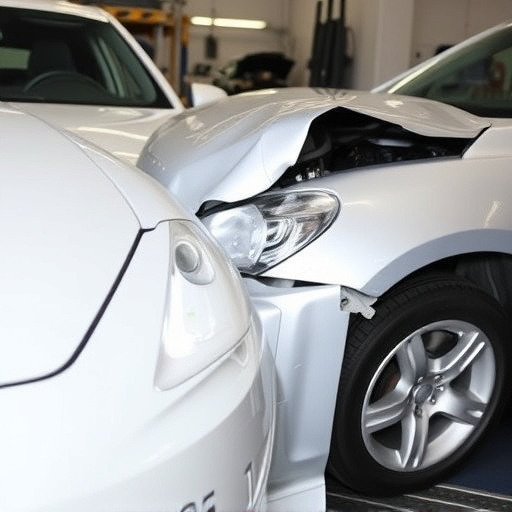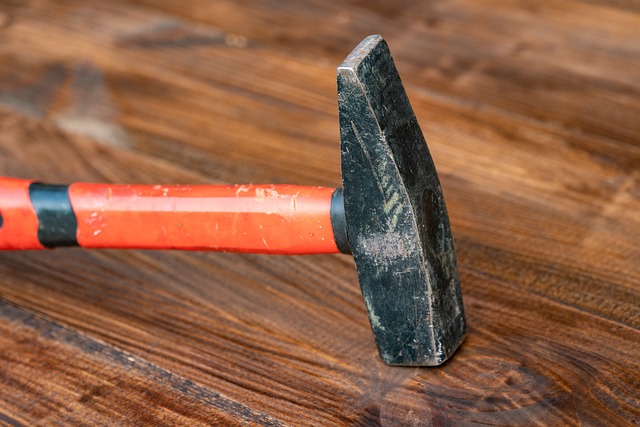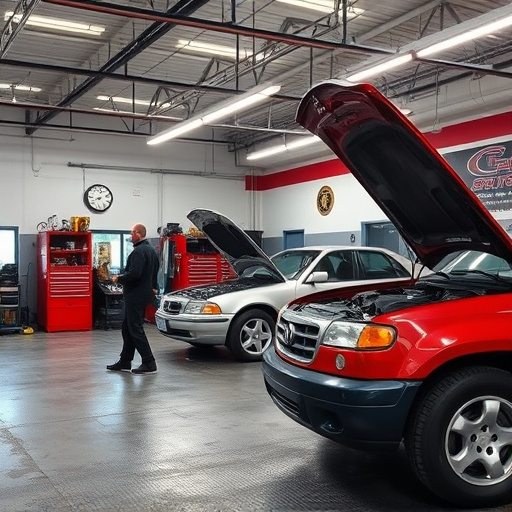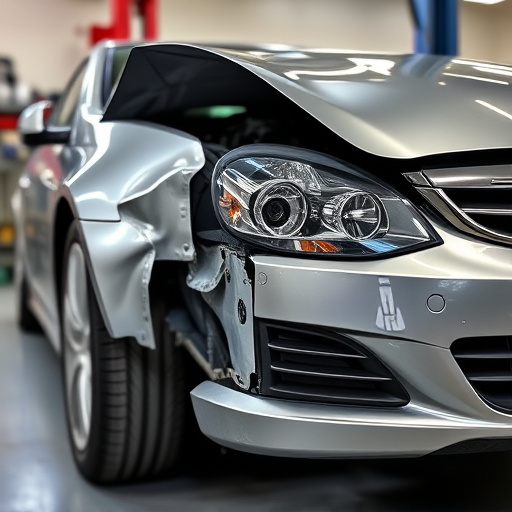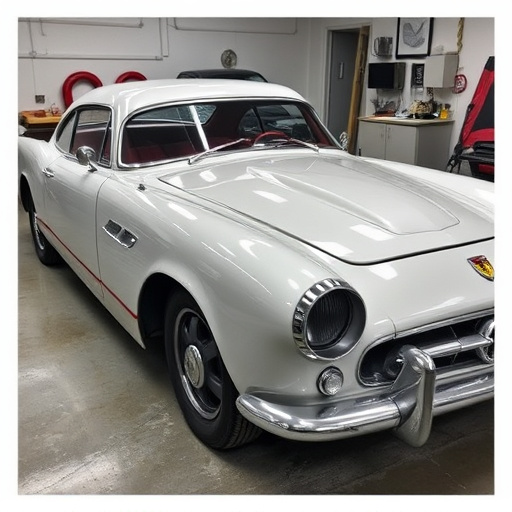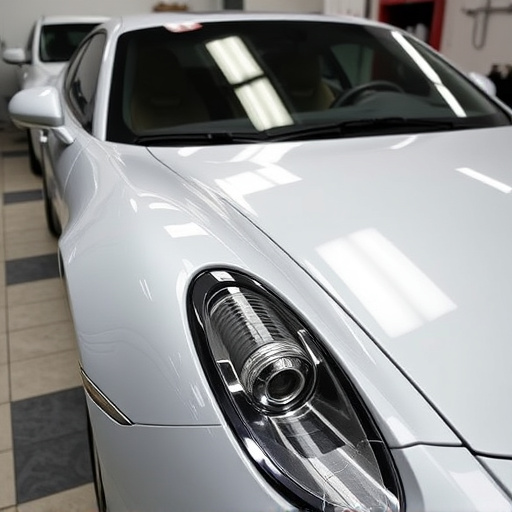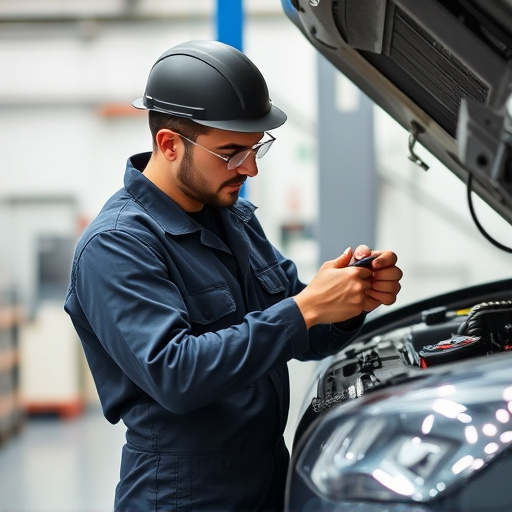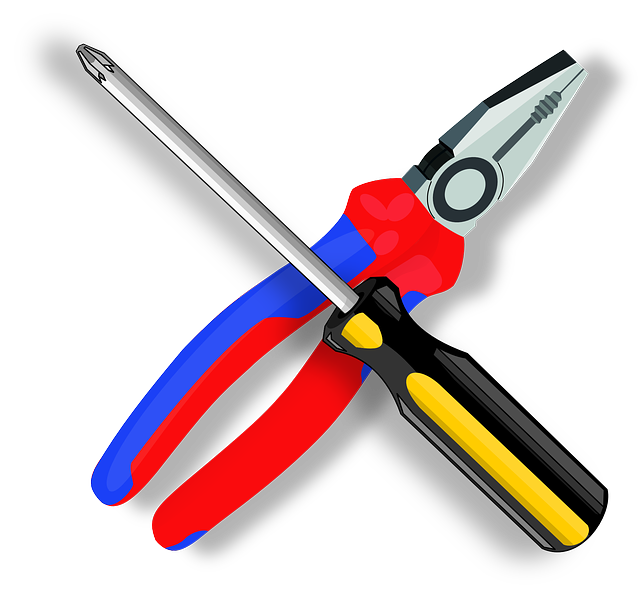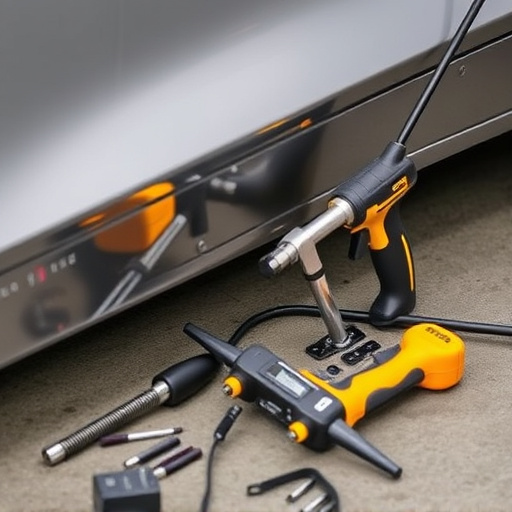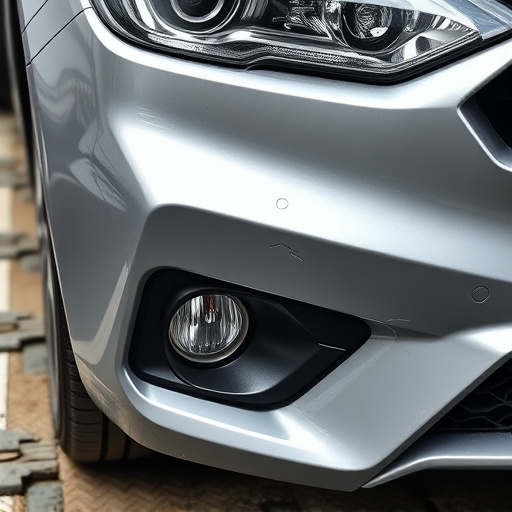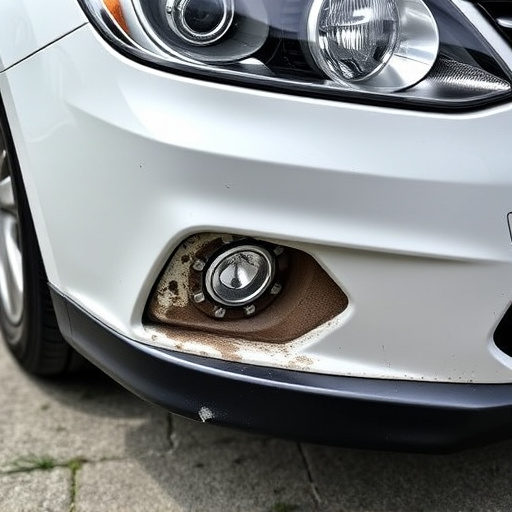ADAS recalibration glass is a specialized automotive technology crucial for maintaining the accuracy and effectiveness of Advanced Driver Assistance Systems (ADAS), particularly in adaptive cruise control (ACC) systems. It ensures optimal performance and prevents potential accidents caused by sensor misalignment after front-end damage or repairs like bumper repair, mitigating environmental factors that can disrupt sensor function. This glass extends the lifespan of ACC systems and contributes to improved road safety in diverse conditions.
“Unveiling the secret behind enhancing adaptive cruise control (ACC) performance, this article explores the transformative power of ADAS recalibration glass. This innovative technology plays a pivotal role in ensuring your vehicle’s safety systems remain accurate and responsive. By enabling precise recalibration of Advanced Driver Assistance Systems (ADAS), this specialized glass enhances ACC functionality, contributing to smoother, safer driving experiences. Discover how it revolutionizes navigation, improves system reliability, and ultimately, boosts overall vehicle performance.”
- Understanding ADAS Recalibration Glass Functionality
- Benefits of Using Recalibration Glass for Adaptive Cruise Control
- Ensuring Precision: The Impact on Vehicle Safety Systems
Understanding ADAS Recalibration Glass Functionality
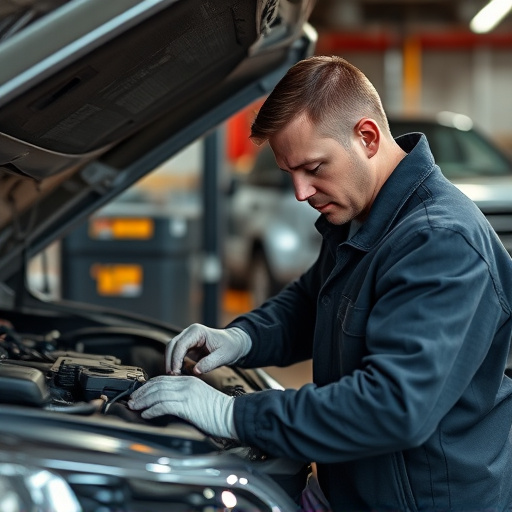
ADAS Recalibration Glass is a specialized automotive technology designed to enhance safety features in modern vehicles, particularly adaptive cruise control systems (ACC). This innovative glass plays a critical role in maintaining the accuracy and effectiveness of Advanced Driver Assistance Systems (ADAS) by enabling precise recalibration. When a vehicle experiences certain types of damage, especially to its front end, including bumper repair or car damage repair, the ADAS sensors might be affected, leading to potential inaccuracies in functions like ACC.
The glass is equipped with advanced sensors and cameras that need to be aligned and calibrated correctly for optimal performance. Recalibration ensures these systems can accurately detect and respond to road conditions, other vehicles, and obstacles. It’s a critical process in the body shop services, as it not only facilitates seamless driving but also contributes to preventing potential accidents caused by misaligned ADAS components, such as faulty bumper repair.
Benefits of Using Recalibration Glass for Adaptive Cruise Control
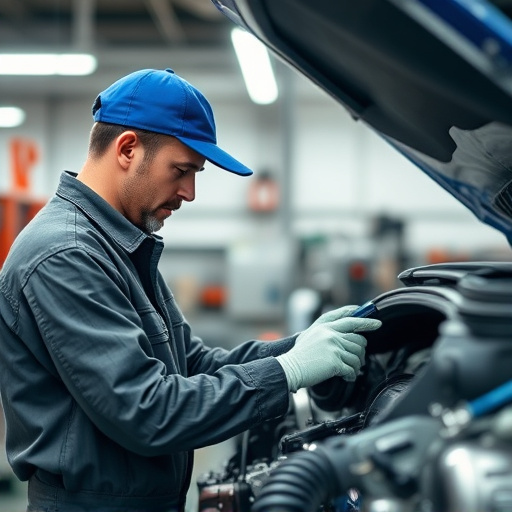
The use of ADAS recalibration glass plays a pivotal role in enhancing the performance and accuracy of adaptive cruise control (ACC) systems. This specialized glass is designed to mitigate the effects of environmental factors that can disrupt the normal functioning of ACC sensors, such as changes in weather conditions, debris on the road, or alterations in vehicle paint due to repairs or wear. By incorporating recalibration glass, vehicles can achieve more precise speed regulation and distance maintenance, leading to a smoother and safer driving experience.
Moreover, ADAS recalibration glass ensures that the ACC system remains calibrated even after various car services, including tire rotations and vehicle paint repair. This is particularly important in maintaining the overall efficiency of Advanced Driver-Assistance Systems (ADAS), which are becoming increasingly integrated into modern vehicles. The ability to quickly and accurately recalibrate these systems not only extends the lifespan of the technology but also contributes to improved road safety across different driving conditions and environments.
Ensuring Precision: The Impact on Vehicle Safety Systems
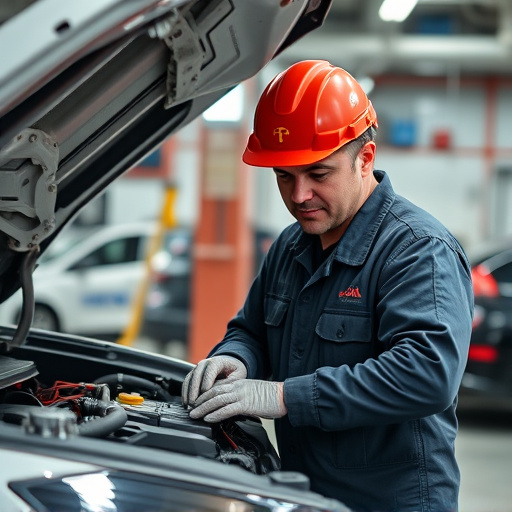
Maintaining precision is paramount when it comes to Adaptive Cruise Control (ACC) systems, and this is where ADAS recalibration glass plays a pivotal role in vehicle safety. These specialized glasses are designed to ensure that the sensors and cameras used in Advanced Driver Assistance Systems (ADAS) remain accurate and aligned. Over time, factors like weather conditions, road debris, and regular wear and tear can impact the performance of these crucial components, leading to potential safety hazards.
By offering a precise recalibration service, auto repair shops equipped with advanced frame straightening techniques can restore optimal sensor functionality. This involves meticulously adjusting and realigning various parts of the car’s bodywork services, including the vehicle’s frame, to ensure that the ADAS components have accurate data for seamless operation. With this meticulous care, drivers can rely on their ACC systems, enhancing overall road safety and providing peace of mind during every journey, especially at higher speeds or in heavy traffic.
ADAS recalibration glass plays a vital role in enhancing the accuracy and performance of adaptive cruise control (ACC) systems. By enabling precise recalibration, this specialized glass contributes to improved vehicle safety by ensuring that ACC sensors accurately detect and track other vehicles on the road. This technology is a game-changer in the automotive industry, offering a simple yet effective solution to maintain optimal system functionality. Incorporating ADAS recalibration glass can revolutionize how vehicles navigate congested highways, ultimately fostering safer driving conditions for all.
